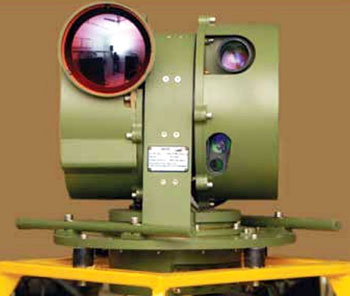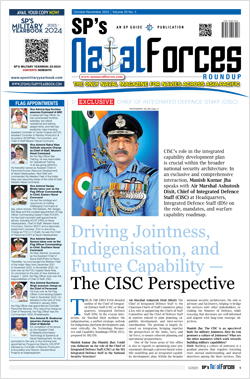INDIAN ARMED FORCES CHIEFS ON OUR RELENTLESS AND FOCUSED PUBLISHING EFFORTS

The insightful articles, inspiring narrations and analytical perspectives presented by the Editorial Team, establish an alluring connect with the reader. My compliments and best wishes to SP Guide Publications.

"Over the past 60 years, the growth of SP Guide Publications has mirrored the rising stature of Indian Navy. Its well-researched and informative magazines on Defence and Aerospace sector have served to shape an educated opinion of our military personnel, policy makers and the public alike. I wish SP's Publication team continued success, fair winds and following seas in all future endeavour!"

Since, its inception in 1964, SP Guide Publications has consistently demonstrated commitment to high-quality journalism in the aerospace and defence sectors, earning a well-deserved reputation as Asia's largest media house in this domain. I wish SP Guide Publications continued success in its pursuit of excellence.
- Global Partners Urged to Tap India's Shipbuilding Potential: Rajnath Singh at Samudra Utkarsh
- All about HAMMER Smart Precision Guided Weapon in India — “BEL-Safran Collaboration”
- India, Germany deepen defence ties as High Defence Committee charts ambitious plan
- G20 Summit: A Sign of Global Fracture
- True strategic autonomy will come only when our code is as indigenous as our hardware: Rajnath Singh
- India–Israel Joint Working Group Meeting on defence cooperation to boost technology sharing and co-development
Breakthrough in indigenous E/O sensor tech

A heartening new indigenous development could take care of India's over-dependence on foreign suppliers for critical electro-optical sensors for surface payloads. The DRDO's Instruments Research and Development Establishment (IRDE) in Dehradun has developed a Stabilised Electro Optical Sight (SEOS) with two-axis stabilisation and an integrated automatic video tracker facility. The indigenous SEOS has three electro-optical sensors, 3rd generation 3-5 μm (640 x 512 FPA) thermal imager (TI) with optical zoom, colour day TV with optical zoom camera and eye-safe laser range finder (ELRF). The day TV camera and TI sport a narrow field of view (NFOV) of 0.8° x 0.6° and wide field of view (WFOV) of 5° x 4° with additional 2 X electronic zoom in TI. These sensors provide a recognition range of 7 km for a NATO type of target. ELRF provides range of the target from 200 m to 9995 m with an accuracy of ± 5 m. According to DRDO, "The modular approach of this sight results into a quick customisation for different applications namely fire control solution for armoured fighting vehicles, surveillance from high speed boats and low altitude aerostat, and tracking system for a QR-SAM." The DRDO will be looking to integrate the new sight onto a slew of upcoming products.





